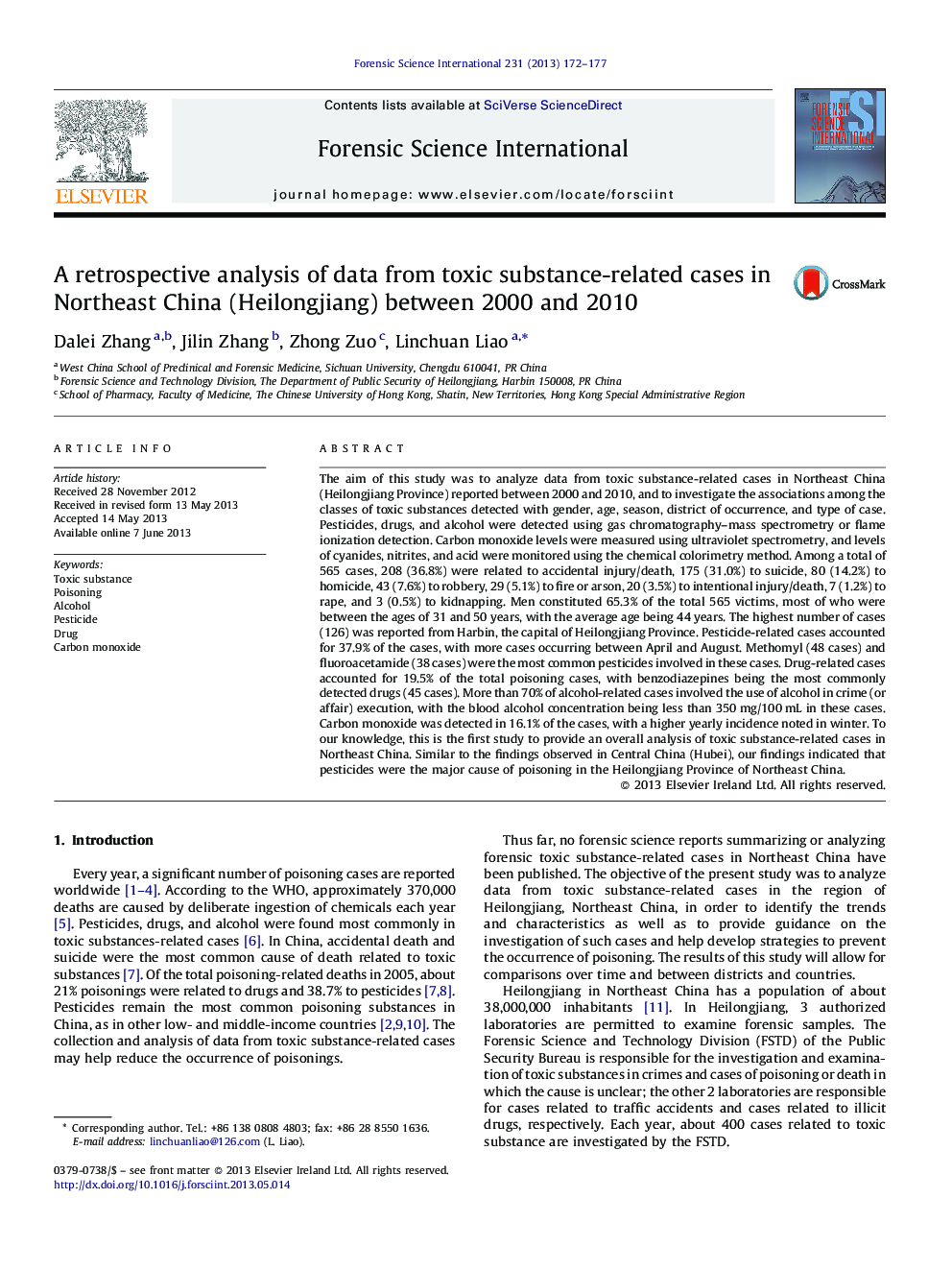| Article ID | Journal | Published Year | Pages | File Type |
|---|---|---|---|---|
| 95834 | Forensic Science International | 2013 | 6 Pages |
The aim of this study was to analyze data from toxic substance-related cases in Northeast China (Heilongjiang Province) reported between 2000 and 2010, and to investigate the associations among the classes of toxic substances detected with gender, age, season, district of occurrence, and type of case. Pesticides, drugs, and alcohol were detected using gas chromatography–mass spectrometry or flame ionization detection. Carbon monoxide levels were measured using ultraviolet spectrometry, and levels of cyanides, nitrites, and acid were monitored using the chemical colorimetry method. Among a total of 565 cases, 208 (36.8%) were related to accidental injury/death, 175 (31.0%) to suicide, 80 (14.2%) to homicide, 43 (7.6%) to robbery, 29 (5.1%) to fire or arson, 20 (3.5%) to intentional injury/death, 7 (1.2%) to rape, and 3 (0.5%) to kidnapping. Men constituted 65.3% of the total 565 victims, most of who were between the ages of 31 and 50 years, with the average age being 44 years. The highest number of cases (126) was reported from Harbin, the capital of Heilongjiang Province. Pesticide-related cases accounted for 37.9% of the cases, with more cases occurring between April and August. Methomyl (48 cases) and fluoroacetamide (38 cases) were the most common pesticides involved in these cases. Drug-related cases accounted for 19.5% of the total poisoning cases, with benzodiazepines being the most commonly detected drugs (45 cases). More than 70% of alcohol-related cases involved the use of alcohol in crime (or affair) execution, with the blood alcohol concentration being less than 350 mg/100 mL in these cases. Carbon monoxide was detected in 16.1% of the cases, with a higher yearly incidence noted in winter. To our knowledge, this is the first study to provide an overall analysis of toxic substance-related cases in Northeast China. Similar to the findings observed in Central China (Hubei), our findings indicated that pesticides were the major cause of poisoning in the Heilongjiang Province of Northeast China.
